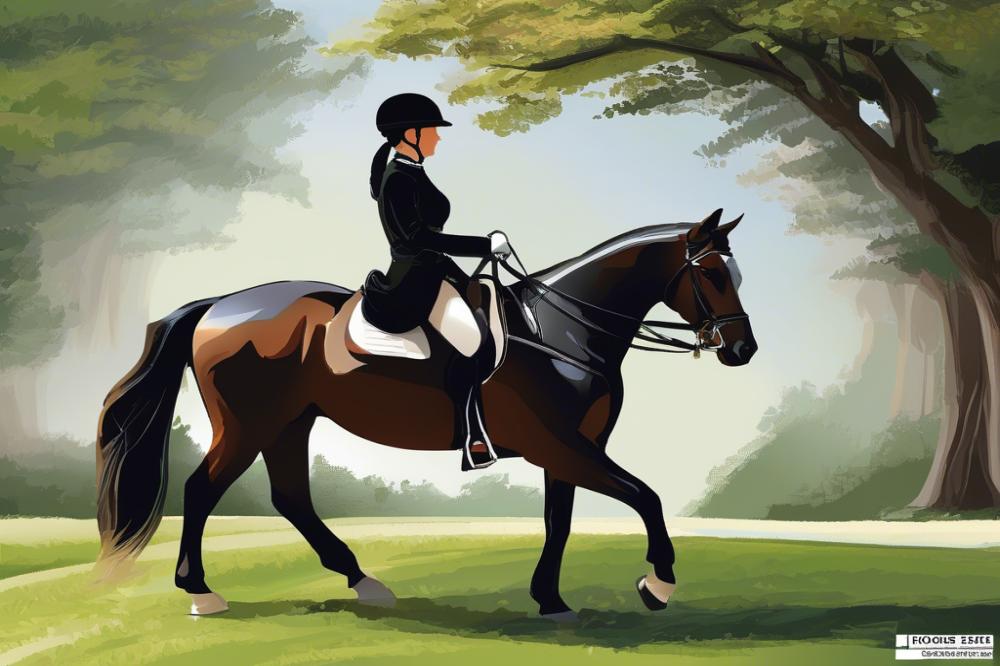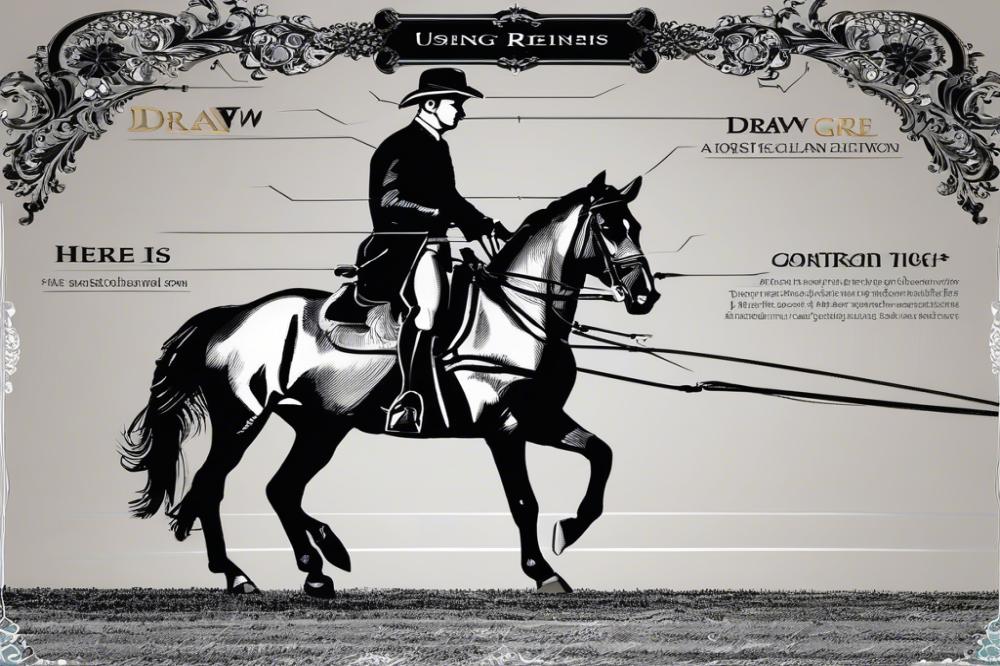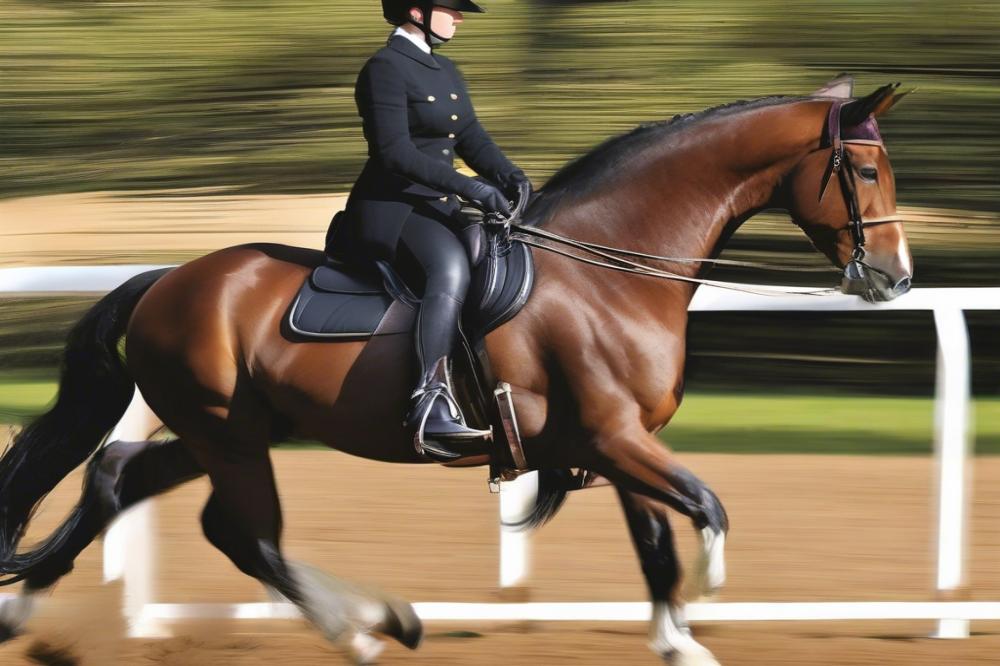Exploring the World of Draw Reins
When it comes to horse riding gear, you might stumble upon various tools that promise to enhance your riding experience. One such tool is the draw reins. Many riders use them in training, but the purpose behind their use can sometimes be a bit cloudy. Essentially, draw reins are designed to help riders encourage their horses to adopt a better posture while moving. Without a doubt, this can be crucial in the world of horse training, as a horse that carries itself well is often more balanced and less prone to injury.
Proper usage of these reins is the key to achieving the desired results. If they’re used incorrectly, there could be negative consequences for both the horse and the rider. You wouldn’t want to unintentionally turn your horse into a pretzel! It’s vital to approach any new equestrian technique with careful thought and consideration. After all, a horse needs to feel comfortable and not overwhelmed. If you’re wondering if a horse is a pet animal, well, it’s complicated—while many see their horses as companions, it’s crucial to remember they are also working athletes!
Throughout this article, we aim to shed light on how to use draw reins effectively in training. We’ll cover the benefits, the potential pitfalls, and, of course, some practical tips for riders of all levels. By the end, you should feel more confident about incorporating this tool into your horse care routine. The goal is to help you better understand this specific piece of equipment and demonstrate how it fits into the puzzle of responsible horse riding. So, settle in as we embark on this journey together, exploring everything you need to know about using draw reins in your equestrian pursuits!
What are Draw Reins

Definition and Explanation of Draw Reins
Draw reins are a specific type of equestrian equipment used in horse training. They are longer straps that attach from the bit to a point of leverage on the saddle. When used correctly, these straps help a rider guide a horse into a better position. This can encourage proper head carriage during rides. Riders often use them when teaching a horse to maintain a relaxed and balanced posture. It’s a bit like giving an extra helping hand while you’re trying to learn something tricky.
Materials and Types of Draw Reins Available
These reins come in various materials. Leather is the traditional choice, but you can also find them made of nylon or webbing. Each material has its perks. Leather tends to look classy and wears well with time. Nylon, on the other hand, is often easier to clean and maintain. As for types, you’ll find some that have an adjustable length. Adjustability can make a huge difference. Finding the right fit for your horse means less frustration and more fun during your training sessions.
How Draw Reins Function in Training
Using draw reins serves multiple purposes in horse training. They provide a way to encourage a horse to lower its head and engage its back. This position can improve balance, making it easier for the horse to move smoothly. When a horse starts to lean or pull, these reins offer gentle pressure. Horses can learn to respond to that pressure by softening their gaits. Imagine teaching a child how to balance on a bicycle with some extra support at first. Eventually, confidence grows, and they don’t need that support anymore!
Proper use of these horse riding gear requires careful handling. If done improperly, it could lead to confusion or discomfort for the horse. Hence, it’s critical to be gentle and clear in your training methods. Riders need to pay attention to their horse’s reactions as they work with this equipment. Positive reinforcement goes a long way in creating a trusting relationship. Always remember, the goal is to teach, not to force. There’s no need to rush; training takes time.
Benefits of Using Draw Reins

Using draw reins can bring about significant changes in how your horse moves. Improved collection and frame for the horse is one of the most important benefits. When correctly adjusted, they help horses bring their heads down and round their backs. This not only makes for a prettier picture but also enhances the horse’s balance. Imagine a horse that feels good and looks great while trotting around the arena!
Along with better movement, communication between the rider and horse takes a giant leap forward. Think of it as a conversation where both parties really understand each other. A clear signal from your hands helps your horse learn faster. This gear allows riders to fine-tune their cues. Instead of a game of charades, it becomes a well-orchestrated dance!
Sometimes, horses can develop habits that seem puzzling. Maybe they rush into jumps or refuse to cooperate. In these cases, draw reins can aid in correcting behavioral issues. They act like gentle reminders for your horse. This piece of equestrian equipment encourages proper head placement and discourages bad habits. It’s like giving your horse some extra guidance when they lose their way.
Horse riding gear is all about helping both horse and rider succeed. No one wants to ride a horse that’s misbehaving or isn’t focused. Instead, let’s create harmony in our training sessions! Using this technique not only improves the ride but also deepens the bond you share with your horse. Every little adjustment counts in horse training.
The key is to use this tool wisely and labeled it “equestrian techniques for better riding.” So many riders find themselves on the right path just by understanding how to use draw reins effectively. Once you learn the ropes, it opens up a world of riding possibilities. You may even find that your horse enjoys the training more, feeling confident and connected!
When to Use Draw Reins

Situations Where Draw Reins May Be Beneficial
Using draw reins can be useful when you’re trying to encourage your horse to develop a better head carriage. They can help when training a horse that tends to lean on the bit or rushes its gaits. For instance, if you have a young horse that struggles with balance, they can aid in teaching the animal to stretch its neck and find its rhythm. In certain cases, seasoned horses may require a little reinforcement when they develop bad habits. Think of it like a gentle reminder for them to listen. However, it’s crucial to remember that they are not a magic fix. Proper use is key.
Considerations for Horse’s Training Level and Temperament
Your horse’s training level plays a significant role in deciding to use this piece of equipment. A horse that is still learning might become confused or stressed if introduced to draw reins too soon. Temperament is equally important; a sensitive pony may react negatively. A gentle giant might accept them better, while a reactive one could panic. Before putting them on, assess your horse’s comfort level with other training aids. As with any equestrian methods, patience is your best friend. Always put your horse’s needs first.
Alternative Training Methods to Consider
Exploring other equestrian techniques can often lead to amazing results without draw reins. Groundwork can be incredibly helpful in establishing communication and trust. Exercises that promote relaxation and balance can also work wonders. Think about long lining or lunging; these methods can teach your horse self-carriage too. Utilizing carrot stretches or offering treats in a controlled way can encourage your horse to engage its core without equipment. Riding with a light contact may be another option to effectively teach your equine partner. Adapting your approach can make all the difference. Remember, mastering horse care includes knowing when to go traditional or try something new.
Proper Technique for Using Draw Reins
Steps for Effectively Using Draw Reins
Starting with the right setup is crucial. First, attach the reins to the saddle. They should run through the bit and clip back to the girth. This unique positioning provides the desired pressure on your horse. Next, adjust the length. An ideal fit allows the horse to stretch its neck while still feeling the reins. Too tight, and you might cause discomfort. Too loose just won’t do anything.
When riding, hold the reins with a gentle touch. Keep a soft contact, instead of jerking or pulling. Think of it as a light nudge, not a shove. This method encourages the horse to lower its head to engage the right muscles. Remember, communication is key here. Your horse should respond to your cues without feeling forced.
Common Mistakes to Avoid
One big mistake is getting too heavy-handed. It’s easy to think more pressure means better control, but that’s not the case. Overusing these equestrian tools can lead to a horse that becomes dull and unresponsive. Horse care is just like any relationship; patience is vital.
Another pitfall is incorrect adjustment. If the draw reins are too short, they can make the horse tense. If they’re too long, they might not provide any benefit. Always check the fit before you trot off into the sunset. Riders also sometimes forget to keep an eye on their horse’s head. If it’s too low, redirecting upward pressure may cause the horse to hollow its back.
How to Adjust Draw Reins for Different Horses
Not every horse is built the same. When it comes to adjusting the reins, consider your horse’s size and training level. For a seasoned horse, a looser adjustment might work best. This gives the horse a bit of freedom without losing control. A younger or less experienced horse might need tighter reins initially. It helps guide them into the right posture without causing confusion.
Observing your horse during training sessions can really inform your adjustments. Does it seem comfortable, or is it tense? A happy horse is a responsive horse. Always be ready to make quick changes based on how your ride is going. The goal is harmony between you and your steed.
Remember, using this piece of horse riding gear should aid in training, not hinder it. With the right technique, you’ll foster a collaborative relationship with your horse. Happy riding!
Safety Considerations
Potential risks associated with improper use
Using any equestrian equipment comes with some risks, and draw reins are no exception. Misuse can lead to serious injury for both horse and rider. Think of it this way—if you pull too hard or too suddenly, it might scare your horse. This fear can result in unpredictable behavior. A horse that feels trapped can be dangerous, bucking or rearing up. Therefore, always assess how you’re using this gear.
Importance of monitoring horse’s response
Pay close attention to your horse’s reactions while using this type of riding gear. A keen eye can make a huge difference. Is your horse calm and responsive, or does it seem anxious? Remember, they can’t voice their discomfort. You must be their voice. Watch their ears, tail, and body language. These subtle cues tell you if they’re okay or if something is off. Regular checks are essential during training sessions. Being attentive can help you adjust the pressure before things escalate.
Advice on when to discontinue use
Sometimes, less is more. If you notice that your horse is not responding well or becoming overly tense, it’s time to reconsider. Training should be a positive experience, not a struggle. If your horse starts to resist, it may mean that the reins are creating undue stress. Don’t stick to a technique just because you think you need to. Horse care is about what’s best for the animal’s well-being. If a session feels off, call it a day. You can always try again another time without causing harm.
Alternatives to Draw Reins
Overview of Other Training Aids and Methods
There are many options when it comes to horse training. Riders often look for different aids to help with specific problems. Some popular alternatives include side reins, martingales, and training forks. Each has its purpose. Side reins can help provide consistency while working on transitions. They encourage a horse to maintain a proper outline without pulling too hard. Martingales keep the horse’s head from rising too high, but they can be a bit tricky. Training forks can also be useful, as they allow more freedom of movement while still guiding the horse.
Comparative Advantages and Disadvantages
When choosing horse riding gear, you should weigh the pros and cons. Side reins offer flexibility and help maintain a steady connection during training. However, if not adjusted correctly, they can cause discomfort for the horse. Martingales, though effective, might create confusion if the horse learns to rely on them too heavily. Many riders find training forks to be an effective way to keep the horse’s head down without restricting movement. Remember, comfort is key. If the horse isn’t happy, training won’t go well.
Choosing the Right Method for Your Horse
Selecting the proper equestrian equipment can feel daunting. Understanding your horse’s personality plays a big role. Is your horse sensitive or more laid-back? A sensitive horse may dislike tighter equipment. On the other hand, a calmer horse may tolerate it better. Always test each method. See how your horse reacts. Transparency is essential. Some horses respond well to gentle guidance, while others prefer a firmer hand. Ultimately, the goal is to find what works best. Tailoring your approach could make all the difference in achieving harmonious progress.
Wrapping It Up
In our journey through the world of draw reins, we’ve looked at several important points. First and foremost, these tools are meant to enhance communication between horse and rider, not to control them by force. Properly used, they can help a horse learn to carry itself better, leading to improved performance and comfort. However, it’s essential to recognize that every horse is an individual, equipped with its likes, dislikes, and quirks. Just like people, horses have their own unique personalities—some may take to the draw reins with ease, while others may respond with confusion or stress.
One significant message that stands out is the idea of responsible use. When approaching training methods, having respect for the horse’s welfare should be our top priority. Riders must always maintain a sensitive hand and a kind heart. The potential for misunderstanding is immense if communication isn’t clear. For example, if a horse feels pressured unnecessarily, it can lead to a variety of issues, from anxiety to physical strain. We wouldn’t want our equine friends to feel like they’re being asked to run a marathon on a hot day without a water break, right?
Finally, don’t forget the importance of continuous learning. Whether you’re an experienced rider or just starting, there’s always more to discover. Consider how various factors, such as the horse habitat, can influence training techniques. When you take the time to understand your horse, you’ll develop a bond that goes beyond just riding. Training should be a partnership, much like a dance, where both horse and rider move in harmony.
As we reflect on responsible training practices, remember that every investment has its price, including the draft horse price and the priceless value of a horse’s well-being. Let’s all strive to keep the passion for horses alive while prioritizing their care. Take what you’ve learned here, be mindful in your training, and let’s create a supportive environment for these beautiful creatures.



